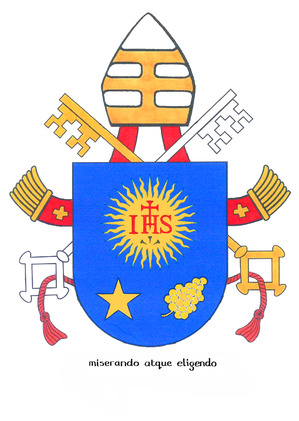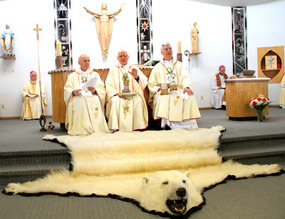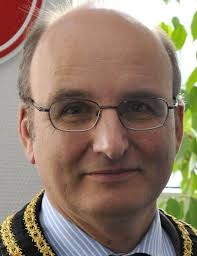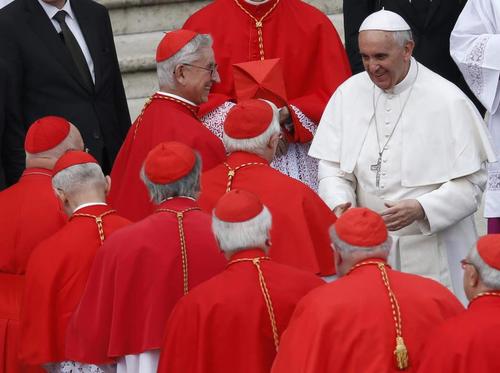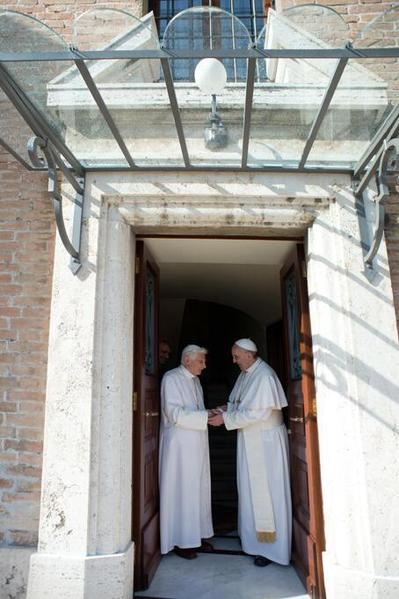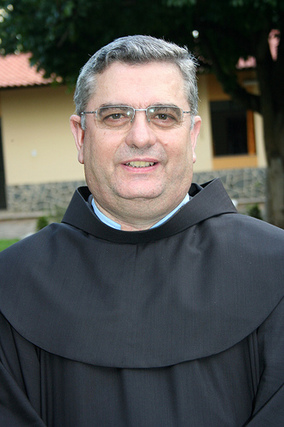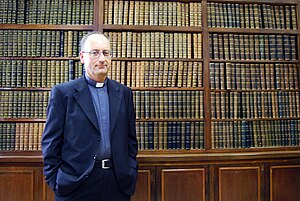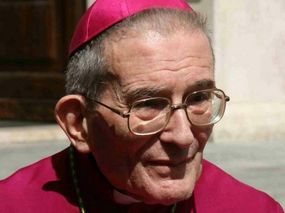
Earlier today in Rome, Pope Francis bestowed the sign of communion between himself and the metropolitan archbishops appointed in the previous year. 35 metropolitans received the pallium today on the solemnity of Saints Peter and Paul. The Vietnamese archbishop could not go to Rome so his pallium will be given in Vietnam. 25 of the metropolitans were Benedict XVI appointees.
An excerpt of Pope Francis' homily:
As a point of comparison, sacraments are to take place during a Eucharistic celebration following the homily; They are: Baptism, Confirmation, Ordination, Matrimony, Anointing of the Sick.The pallium is a symbol of communion with the Successor of Peter, "the lasting and visible source and foundation of the unity both of faith and of communion" (Lumen Gentium, 18). And your presence today, dear brothers, is the sign that the Church's communion does not mean uniformity. The Second Vatican Council, in speaking of the hierarchical structure of the Church, states that the Lord "established the apostles as college or permanent assembly, at the head of which he placed Peter, chosen from their number" (ibid., 19). To confirm in unity: the Synod of Bishops, in harmony with the primate. Let us go forward on the path of synodality, and grow in harmony with the service of the primacy. And the Council continues, "this college, in so far as it is composed of many members, is the expression of the variety and universality of the people of God" (ibid., 22). In the Church, variety, which is itself a great treasure, is always grounded in the harmony of unity, like a great mosaic in which every small piece joins with others as part of God's one great plan. This should inspire us to work always to overcome every conflict which wounds the body of the Church. United in our differences: there is no other Catholic way to be united. This is the Catholic spirit, the Christian spirit: to be united in our differences. This is the way of Jesus! The pallium, while being a sign of communion with the Bishop of Rome and with the universal church, with the Synod of Bishops, also commits each of you to being a servant of communion.
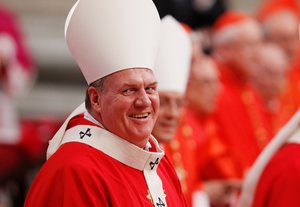
Among some of the 19 countries represented:
1 from Vietnam
3 from Africa
3 from Brazil
3 from India
3 from Mexico
4 from the USA
5 from South America
The rite today followed the Cerimoniale Episcoporum (Ceremonial of Bishops). The pallium is not a sacrament, nor is the pallium a sacramental in nature. It is a symbol of communion between two people: the residential archbishop and the Bishop of Rome. The is generally given only to archbishops who head archdioceses and not to those who have the title of archbishop for other reasons (nuncios, Vatican curia officials, those who have received the title ad personam), but the pope can give to anyone he chooses (which hasn't happened in a long time).
(In the picture is Archbishop Joseph W. Tobin, CSsR, archbishop of Indianapolis wearing his pallium at St Peter's Basilica, Rome. Photo Paul Haring, CNS).



